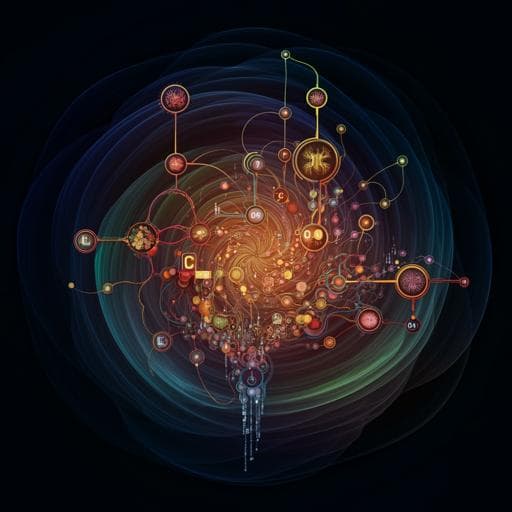
Interdisciplinary Studies
Evolution of mediated memory in the digital age: tracing its path from the 1950s to 2010s
Y. Han
Delve into the fascinating interplay of memory and media with research conducted by Yingyi Han. This literature review uncovers the dual representation of memory, blending neurological insights and cultural perspectives across decades of transformation in media technology. Discover how our understanding of memory has evolved in the digital age!
~3 min • Beginner • English
Introduction
The paper provides an exhaustive literature review of mediated memory since the 1950s, premised on the inseparable connection between human memory and media across tools from pen-and-paper to cinema, television, and the internet. Drawing on José Van Dijck’s definition, it treats mediated memory as shaped both by media’s influence on our understanding of memory and by how media reshape conceptions of physiological memory. The study aims to synthesize how memory is stored, represented, and communicated via media, spanning individual (physiological) and collective (sociocultural) dimensions. It organizes the field’s evolution into three trajectories: (1) neurocognitive and technological mediation of individual memory emerging with the cognitive revolution and computer metaphors (1950s onward); (2) humanities and social sciences focus on mass and digital media shaping cultural/collective memory amid the 1980s memory boom; and (3) interdisciplinary fusion since the late 2000s that integrates scientific and sociocultural paradigms. Using these phases, the paper clarifies how mediated memory evolved from a subordinate topic within multiple disciplines into an autonomous, interdisciplinary field and why paradigm shifts occurred over seven decades.
Literature Review
The review is structured along three trajectories and decades-long developments:
1) Neurocognitive science research (1950s–1990s):
- Cognitive revolution and computer metaphor framed memory as representational processing (Atkinson & Shiffrin; Baddeley & Hitch; Fodor), later challenged by Searle’s Chinese Room.
- Shift to embodied cognition emphasized nonrepresentational, contentless aspects (Lakoff & Johnson; Varela). Neuroimaging (PET, fMRI) visualized encoding/retrieval dynamics and supported constructivist views of memory (e.g., differing neural representations for encoding vs retrieval; forgetting as failed consolidation; remembering as neural network reactivation). Loftus and others argued memory is inherently reconstructive. Experiments demonstrated technological modulation of memory traces (e.g., place-cell stimulation in mice).
- Distributed cognition (Salomon) reframed memory as extended across bodies, environments, and media (Sutton; Donald). Media scholars reciprocally modeled storage systems as active, distributed infrastructures (Kelly; Star & Bowker). With the internet, memory became pervasive, accessible, disposable, and distributed (Hoskins).
2) Humanities and social sciences research (1980s–2010s):
- Memory boom paralleled mass and digital media expansion. Debates over “new vs old media,” remediation (Bolter & Grusin), and convergence (Jenkins) emphasized continuity and change in memory practices.
- Collective memory frameworks (Halbwachs) were applied to mediated memory: media reconstruct history, perform selective amnesia, and align memory with identity and ideology; counterviews stressed memory’s performativity and resilience to control (Connerton; Kligler-Vilenchik).
- Social media foregrounded algorithmic curation and its tensions with user autonomy; critiques of determinism contrasted with perspectives that algorithms process data, not meaning.
- Boundaries between private/public and individual/collective blurred; democratization and decentralization of memory via networked platforms enabled “rogue” archives and diverse narratives (Assmann & Conrad; De Kosnik). Concepts like prosthetic memory (Landsberg), postmemory (Hirsch), global/multidirectional memory (Assmann & Conrad; Rothberg), and “collected memories” (Olick; Erll) reframed collective remembrance in digital ecologies.
- Digitization enhanced traceability and recall (“end of forgetting”) but raised concerns about memory overload and the right to be forgotten.
3) Interdisciplinary research (late 2000s–2010s):
- Calls to bridge physiological and sociocultural paradigms (Van Dijck; Hoskins) led to ecological approaches examining how brain, body, technologies, and practices co-produce memory.
- Embedded/distributed cognition concepts extended to object memory and nonhuman actors (IoT, biomedia), with smartphones and wearables as externalized memory tools.
- Empirical studies linked media affordances to memory processes: “Google effects” (Sparrow et al.) showed reliance on where information is stored; fMRI work (Gagnepain et al.) indicated collective memory structures in the medial prefrontal cortex; social media content can enhance memorability (Mickes et al.), aid learning (Acar), or induce errors/shallower processing (Fenn et al.; Jiang et al.; Tamir et al.).
Overall, the literature reveals a shift from internalist, representational models to constructivist, distributed, and ecologically embedded accounts, and from dichotomized paradigms to integrative, cross-disciplinary frameworks.
Methodology
This study conducts an extensive, historical literature review of mediated memory research from the 1950s to the 2010s. It organizes prior scholarship into three chronological trajectories—(1) neurocognitive science of memory mediated by technology (computers, neuroimaging), (2) humanities and social sciences on mass/digital media and cultural memory, and (3) interdisciplinary integration since the late 2000s. For each phase, it surveys seminal theories, debates, and empirical findings, focusing on representative research paths to illustrate the field’s evolution from disciplinary silos to an autonomous, interdisciplinary domain.
Key Findings
- Mediated memory exhibits dual representations: technological/physiological (via neuroimaging and computational metaphors) and cultural (via mass, digital, and social media). A strict division between these paradigms risks oversimplification; since the late 2000s, interdisciplinary fusion has advanced integration.
- Cognitive science evolved from representational models influenced by computing to embodied, constructivist, and distributed accounts. Neuroimaging revealed distinct neural activity for encoding vs retrieval and supported constructivism (e.g., Rugg et al.; Levy et al.). Loftus et al. emphasized that memory is inherently reconstructive and partly false.
- External media can modulate memory: place-cell stimulation during sleep in mice (n=5) created location preferences (De Lavilléon et al.).
- Distributed cognition reframed memory as reliant on bodies, environments, and technologies (Salomon; Sutton; Donald), aligning with networked media’s pervasiveness and extensibility (Hoskins).
- In cultural domains, mass/digital media both reconstruct and pluralize memory. Concepts such as remediation, convergence, performativity, prosthetic/postmemory, multidirectional and global memory, and collected memories account for the complexity of mediated remembrance.
- Algorithmic curation on social platforms shapes exposure and retrieval but does not uniformly determine meaning; user autonomy and interpretation remain crucial.
- Empirical media-memory effects:
• Google effects: people remember where to find information more than the information itself (Sparrow et al., 2011).
• Social posts are highly memorable: Facebook posts outperform book sentences/faces in recall (Mickes et al., 2013).
• Platform and style can affect false memories: nonsocial media controls showed more false memories than Twitter presentations (Fenn et al., 2014).
• Social sharing can both enhance retention (Wang et al., 2016) and in some cases reduce recall or depth of comprehension (Jiang et al., 2016; Tamir et al., 2018).
- Digitization increases traceability and the salience of everyday memories (“end of forgetting”), raising ethical concerns (right to be forgotten) and highlighting the socio-technical shaping of memory.
- The field’s trajectory shows a move toward ecological, embedded, and multi-centered models that integrate brain, body, media technologies, and sociocultural practices.
Discussion
By synthesizing seven decades of research, the paper demonstrates that memory is inherently mediated and best understood through an integrative lens that links physiological mechanisms with sociocultural mediation. The review shows how neuroimaging and cognitive science reveal memory’s constructive and distributed nature, while media studies expose how platforms, practices, algorithms, and institutions shape cultural and collective remembrance. Interdisciplinary approaches reconcile earlier dichotomies by treating memory as an ecological system embedded in bodies, technologies, and social practices. This integrated perspective clarifies how digital media can enhance, bias, or transform memory, reframes debates about control versus resistance (political and algorithmic), and updates collective memory concepts (e.g., multidirectional, collected, global memories). The findings underline the need for collaborative theories and mixed methodologies to capture mediated memory’s dynamics in the digital age.
Conclusion
Mediated memory research has evolved from subfields within cognitive science and cultural/sociological studies into an autonomous, interdisciplinary domain. The paper argues that memory should be conceived as a continuum spanning biological substrates and sociocultural influences, constructed and maintained through interactions among brain, body, technologies, and practices. Future work should build on the current integration to develop field-specific theories and methodologies tailored to mediated memory, leveraging experimental, computational, and qualitative approaches to explain how memory is constructed, circulated, and transformed in digitized environments.
Limitations
- The field exhibits a historical dichotomy between scientific and humanities-social paradigms, risking oversimplification; truly integrated frameworks remain underdeveloped.
- Persistent gaps exist in linking physiological mechanisms with sociocultural processes in unified models, and in adjudicating the extent of algorithmic versus user autonomy in memory construction.
- Conceptual challenges remain in distinguishing individual vs collective memories in networked contexts.
- As a literature review spanning the 1950s–2010s, the study does not present new empirical data and focuses on selected representative paths per phase, which may omit some strands of research.
Related Publications
Explore these studies to deepen your understanding of the subject.







